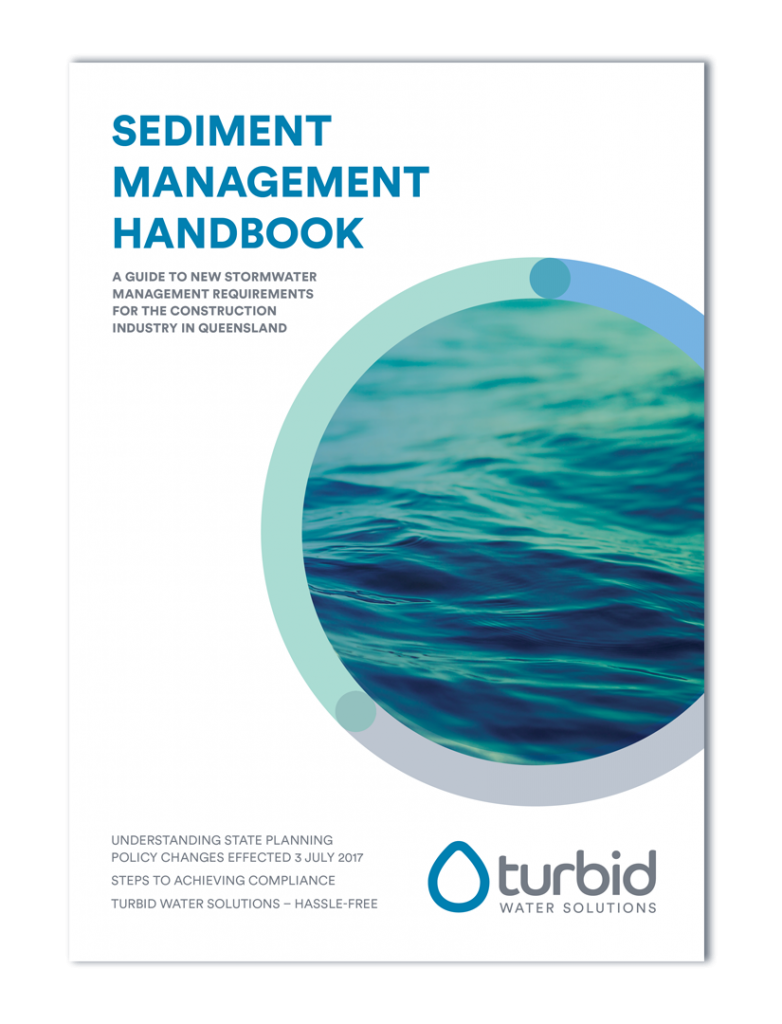In Queensland
Understanding the State Planning Policy changes. Here’s what you need to know.

Changes to Queensland’s State Planning Policy came into effect in July 2017 and will have wide-reaching impacts for the construction industry.
Save time wading through 88 pages of policy! Simply download Turbid Water Solutions’ free Sediment Management Handbook.
- Understand the WHY.
- Understand the HOW and learn about Turbid’s Stormwater Process.
- Get to know High Efficiency Sediment (HES) basins.
- Set your sediment control to auto-pilot.
- Achieve hassle-free compliance!
If you manage or work in construction or development anywhere in Queensland, the policies changes are likely to impact you.
On 3 July 2017, the Queensland Government released the new State Planning Policy. The policy addresses a vast number of planning and development issues. It has wide-ranging impacts on the construction industry including new requirements for sediment basins.
One of the key policy changes relates to how water quality is managed on construction sites and includes a more stringent performance standard for sediment basins.
The bottom line is..
The policy effectively encourages the use of High Efficiency Sediment (HES) basins1 on most construction sites throughout Queensland.
As of 3 July 2017, the changes need to be incorporated in planning for all proposed works and new development applications.
Why are the changes necessary?
“Water quality is one of 17 state interests outlined in the State Planning Policy. The state’s expectation is that water quality be maintained or even improved during construction and development projects,” says Graeme “Butch” Uechtritz, Managing Director of Turbid Water Solutions.
“Our climate in Queensland is different to the southern states. We have a distinct wet season with frequent thunderstorms and widespread monsoonal rainfall. Our climate generates a lot of run off which can be too much for traditional sediment basin designs,” says Butch.
“In fact, recent studies conducted for the Queensland Government have shown traditional sediment basin designs typically only capture and treat turbidity for 11% to 37% of Queensland’s annual average run off volume.
“That’s a lot of dirty water being discharged untreated into our waterways!” says Butch.
“The Queensland Government has identified that this standard is grossly inadequate to protect waterways from the impact of construction-phase turbidity and fine sediment.
“The State Planning Policy now requires sediment basins to treat at least 80% of the annual average run off volume. That’s a massive jump in requirement standards,” says Butch.
“With these new requirements, it will be almost impossible for the construction industry to comply, without changing technology and processes.
“But there is good news for the construction industry in relation to these changes.”
What’s the good news?
“The good news is the technology, systems and processes are already available to easily achieve compliance with the new standards AND reduce labour requirements.
“Not only that, Turbid’s High Efficiency Sediment basins cost less and take less land than a traditional sediment basin designed and operated to the old standard. That’s a real saving to the industry and an improved environmental outcome. What’s not to like about that!
“The secret is using systems that automate the management and monitoring process,”
– Graeme “Butch” Uechtritz, Turbid Water Solutions
Guide to achieving compliance
1. Understand the WHY
Understanding the new standards is important so you can educate your clients and workforce.
HOWEVER, the new State Planning Policy (July 2017) is 88 pages long!
The team at Turbid has pored over the policy document and pulled out important pages for you to read and understand.
You will find them in the Appendix of our ebook: Sediment Management Handbook – A guide to new sediment management requirements for the construction industry in Queensland.
The full State Planning Policy July 2017 is available online at www.dilgp.qld.gov.au
2. Understand the HOW
Turbid can design, build and operate (or any combination of) various sediment control solutions, taking into account the site’s:
- variability in rainfall and the use of stored water as a resource,
- site specific constraints,
- site specific assets, and
- operational ability to achieve water quality targets.
Working with developers and contractors, Turbid will design the most effective solution prior to any groundworks occurring. Any temporary designs need to anticipate the final stormwater management strategy for the site to ensure a seamless transition between the construction and operational phases of the development.

 Products
Products Free Ebook
Free Ebook